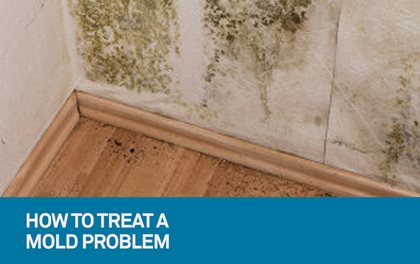Wednesday February 04, 2015
 It’s the scourge of households everywhere: the unsightly, unsanitary, unbecoming sight of mold. But fighting mold means more than launching a full-scale assault when you see it (though that can be part of the battle plan). Instead, consider a comprehensive strategy – here are some tips to help you get started and steer clear of HOA or condo mold.
It’s the scourge of households everywhere: the unsightly, unsanitary, unbecoming sight of mold. But fighting mold means more than launching a full-scale assault when you see it (though that can be part of the battle plan). Instead, consider a comprehensive strategy – here are some tips to help you get started and steer clear of HOA or condo mold.Strategies for avoiding and preventing mold in your community
-
Keep an eye out.
You can watch for signs of areas that are appealing to mold...that way you can address it before it gets a chance to take hold. Start by looking for signs of water or dampness – not just in bathrooms and kitchens, but along floorboards in other rooms as well. Be sure to look up, too. For example, a discoloration on the ceiling may indicate a leak located on the floor above or, if found along your windows, it may indicate leaks along the building’s exterior. Discolored furnishings are also telltale signs of leaks.
-
Trim those shrubs and trees.
When trees and shrubs get overgrown, they invite the kind of damp conditions that mold thrives in. Dead leaves and underbrush is like a buffet for mold, so if you have thick foliage growth near the sides of your home, you’re pretty much inviting mold to move in as your closest neighbor. When that happens, it’s simple for spores to travel through your doors and windows – making mold your latest (and most unwelcome) houseguest.
-
Slope Away.
If the land around your home or buildings slopes toward the structure, rain can collect and create a damp place for mold to thrive in. If you can, ensure that the land around your building slopes downward and away to create proper drainage. Investigate what measures can be taken to install proper drainage throughout your property.
-
Check your roof.
A leaky roof is a sure-fire avenue toward a moldy attic. Don’t just look for cracks or holes, though – make sure you’ve installed the proper flashing around vent pipes and air conditioning units. This will help direct drainage off the roof – and keep it out of your home.
-
Spend some time in your attic.
Hey, it may not be your favorite part of the house, but be sure you get up there more than the once a year to get the holiday decorations. Inspect your attic for water stains or mold growth, paying particular attention to roof decking, the floor, joists, and even underneath the insulation. Among mold’s favorite foods are the paper backing on fiberglass insulation and the organic material deposited between the fiberglass strands.
-
Monitor Humidity.
Even moisture in the air can create enough dampness for mold. Keep your home’s humidity levels below 50% to prevent problems.
-
If you suspect mold (or see it), act fast.
Hiring a qualified mold inspector can help determine the extent of your mold problem. If you don’t have one on speed dial, a good property management company can recommend one to you. Your inspector will use a digital hygrometer to monitor humidity levels in different areas, pinpointing the spots most conducive to mold. They may also take core samples from affected areas. These samples are then taken back to a lab and grown for about a week so the specific type of mold can be identified. With that information, a custom remediation plan can be put in place.
To learn how a professional management company can provide additional support to your community, contact a member of our team at FirstService Residential.